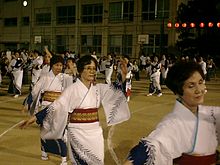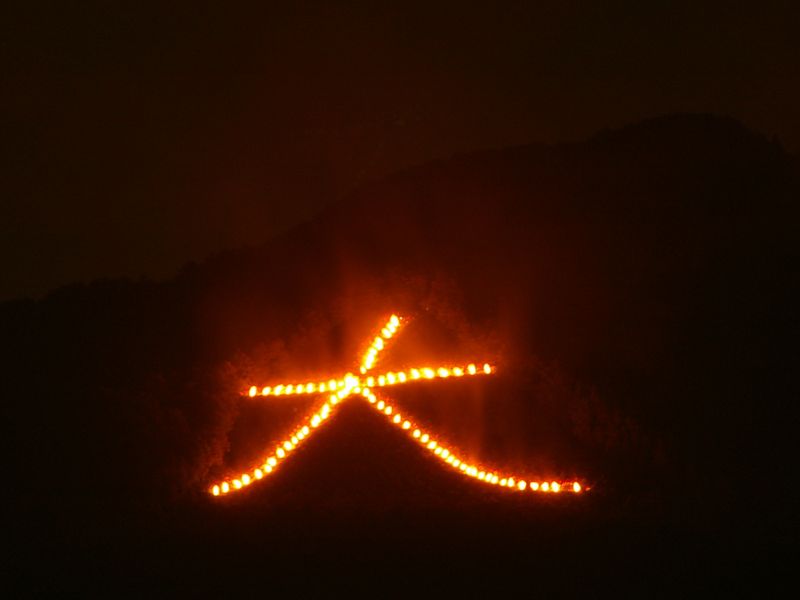It’s coming up to that special summer time of Obon – Japan’s day of the dead. Or rather days.

Bon odori, or the dance of the dead. Circle dances are held in which it's thought that the spirits of the deceased partake in order to celebrate the unity between the living and the dead. (courtesy Wikicommons)
Though the dates of the festival can vary from region to region, the spirits of family deceased are thought to come back to visit on Aug 14 when reception fires are lit, and to depart on Aug 16 when Departure Fires (Okuribi) are lit.
Green Shinto has carried pieces on the festival before. For coverage of its syncretic nature and the significance of ancestor worship in Japanese culture, see here.
For a piece on Kyoto’s Daimonji Festival, when the spirits of the dead are given a big send-off by symbolic fires lit on the hills surrounding the city, see here. It contains a long article from the Kyoto Shinbun entitled ‘Bonfires for commoners’ about the origins of the festival.
For ancestor worship in the pagan tradition, with a focus on Stonehenge, see here.

The Daimonji Festival takes its name from the big 'dai' character written on the hillside above Ginkaku-ji, in reference to a Buddhist teaching.

Leave a Reply